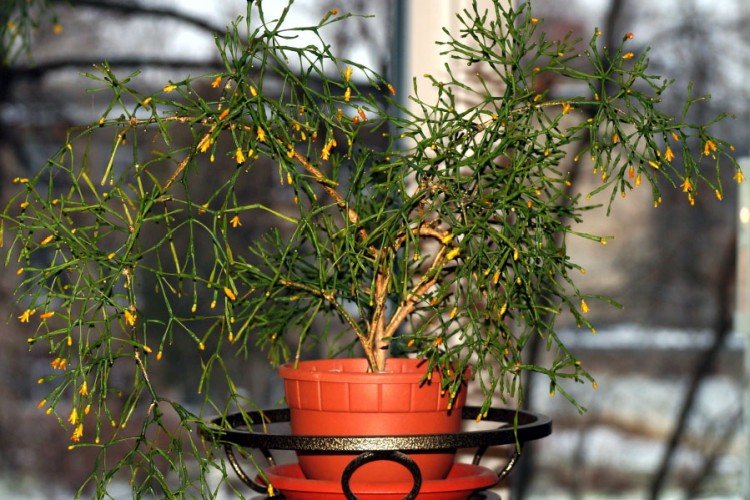
There are many bizarre and almost fantasy species among succulents and cacti. For example, the hatiora, which so closely resembles indoor green coral due to its structure. Its shoots look like the tentacles of some mythical monster. It’s also very easy to grow at home!
general information
Hatiora lives in tropical forests and, in fact, leads a terrestrial lifestyle. It has very superficial fibrous roots, and air roots form between the shoot segments. Due to this, she manages to get moisture and nutrients from literally all sides.
Hatiora grows slowly, and at home rarely exceeds 30-40 cm.But old healthy specimens, which are already 10 years old or more, can grow up to 1.8 m.As they grow, the shoots stretch up, but over time they droop under their weight …
The green shoots of the hathiora consist of pot-bellied cylindrical segments that can also swell when moisture accumulates. Older shoots gradually become darker. On some, white dots are visible – all that remains of the thorns of the former cactus.
Hatiora blooms with the same unusual tubular flowers at the end of the stems. Usually they are yellow or pink, and after a couple of weeks they gradually wither, and berries form in their place.

Types of hatiora
In fact, the hatiora genus is very small, and it includes only 4 species. Between themselves, they differ in the shape of the segments, the color of the buds and the structure of the bush.
Salleros Hatiora
The same hatiora with thin elongated tubular segments. Its bright green shoots actively branch and grow, and during the flowering season they are covered with small yellow bells.
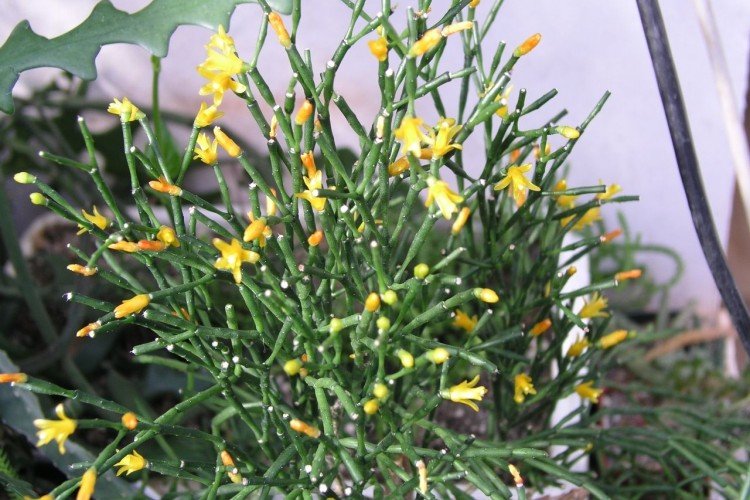
Pink hatiora
Its segments are flat, wide and ribbed, 2-2.5 cm long. The green tint is mixed with red and gray, and occasionally the shoots are covered with spiny hairs. It is a very decorative species with large flowers up to 4 cm in diameter.
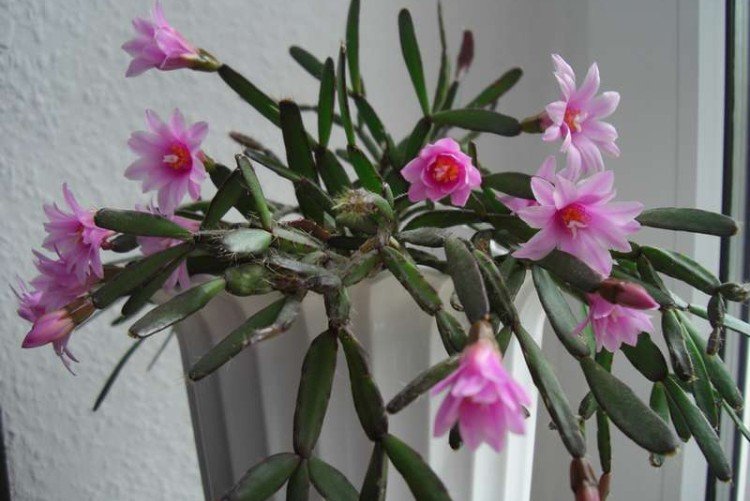
Hatiora Germina
Another pink species with very bright medium-sized flowers – up to 2.5 mm. This hatiora has long shoots that easily grow over 30 cm.In addition, the length of each segment reaches 5 cm.

Hatior Gartner
Its bright crimson or red buds are so richly colored that it is impossible not to notice them. They look especially impressive in contrast with dark flat stems in jaggedness.

Hamedorea (50 photos): types, cultivation and care at home
Hatiora care
Despite its atypical appearance, the hatiora is completely unpretentious. Choose a good place for her and occasionally pay a little attention – and she doesn’t need anything else!
Temperature
The average comfortable temperature for a hatior throughout the year is 20 degrees. But keep in mind that her dormant period does not come in winter, but in the first half of autumn. Therefore, at this time, it is better to lower the temperature to 15 degrees and reduce watering.

Lighting
Hatiora loves long daylight hours and bright diffused lighting. But it should not be left in direct sunlight, especially on the southern windows. On the hottest days, we advise you to set it aside or shade it.

Watering
Even in hot weather, the hathiora is rarely watered, as the soil dries out. And gradually reduce this frequency even more as the temperature decreases. In the summer, we recommend spraying the cactus.

The soil
You can use cacti and succulent soil, or mix your own leafy soil and turf substrate. But be sure to add baking powder and some organic matter, like humus.

Fertilizers and feeding
When the hatiora is actively growing, periodically feed it with mixtures with a high content of phosphorus and potassium. The optimal frequency is about once every 2-3 weeks.
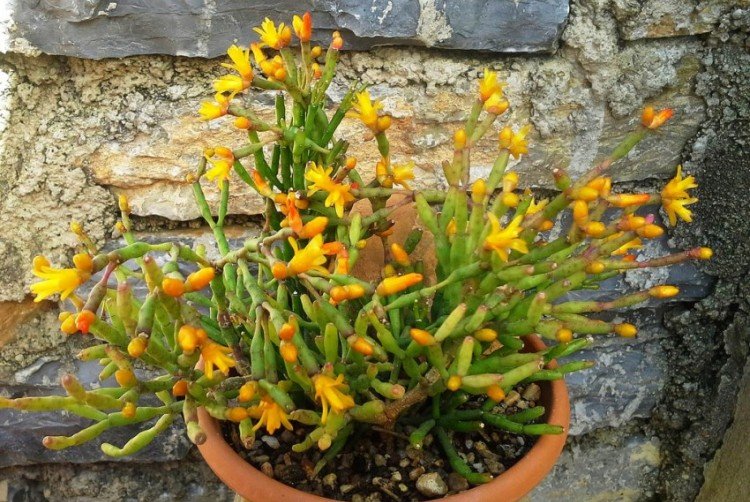
Transfer
Hatiora is transplanted as it grows, especially in the early years, when it grows even faster. Remember that its rhizome is shallow, but spreading, so the flowerpot needs a wide, not deep. Do everything as carefully as possible, because the stems of the hatior are fragile. If necessary, you can install a support for it.

Date palm (50 photos): types, care and cultivation at home
Planting and breeding hatiors
It is most convenient to propagate the hatiora by cuttings, because it is with such segments that it reproduces most rapidly in nature. Choose a beautiful, healthy shoot and cut a stalk with 3-5 segments. Leave it in the water, change it every day, and when the roots grow back, plant it in the ground.

Pest and disease control
The hatiora stems become deformed and turn red if it is too hot. And they deteriorate and darken, on the contrary, from the cold. An excess of moisture easily leads to fungal diseases. Because of them, the shoots become covered with spots, become soft and watery, and lose their shape. In this case, you need to carefully cut out the painful areas and treat the plant with fungicides.
Mealybugs often settle between the segments of the hathiora. It is easy to notice by a whitish bloom and the same specks, as if sprinkled with flour. Carefully remove the pests with a cotton swab dipped in alcohol, and then treat with insecticides.
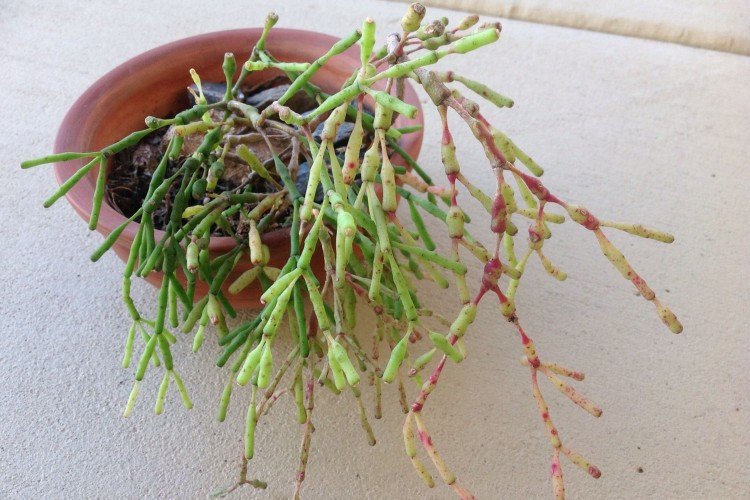
Epipremnum (50 photos): types, cultivation and care at home
Hatiora – photo
How could we tell about such an unusual plant and not show it closer and from all angles? Just look how beautiful the hatiora is!




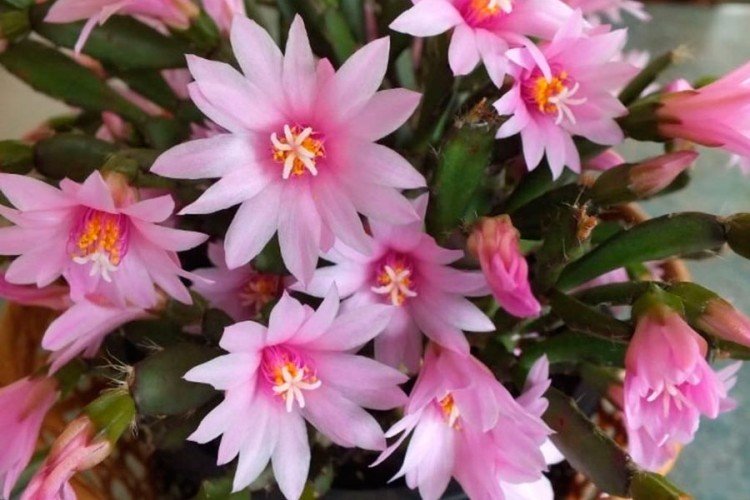






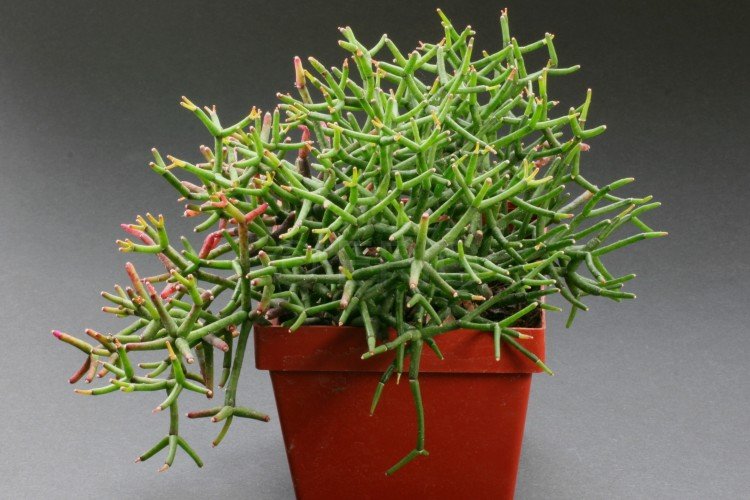





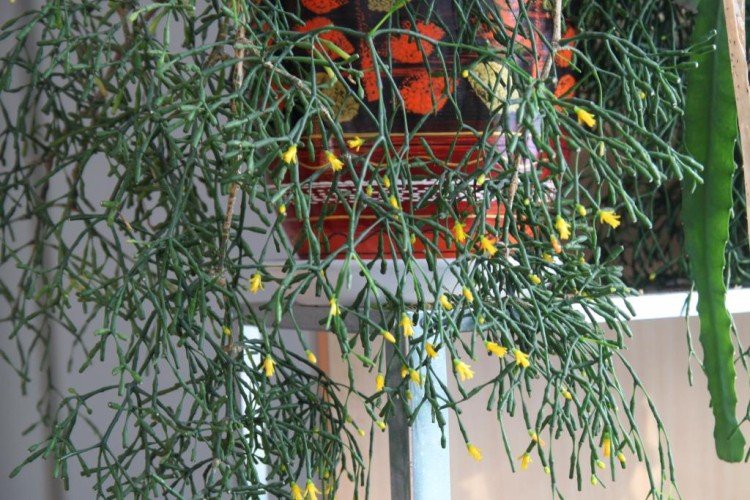





Did you like the publication? Subscribe to our channel in Yandex.Zen, it helps us a lot in our development!






